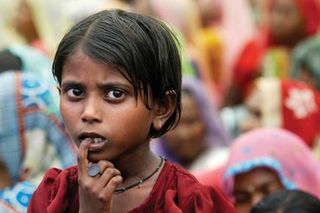Ashiq Hussain
SRINAGAR: Around 60 percent of villages in Jammu and Kashmir state, known for its glaciers, fresh water lakes and streams, have insufficient supply of drinking water while one-third of total households consume unsafe water, a study has revealed.
The study conducted by National Level Monitoring agency of the rural development ministry has also found that nearly half of the total schools in villages are supplied with unsafe drinking water.
The assessing officers found that only one-fifth (21%) of villagers were getting good quality drinking water in all the 12 districts which include Anantnag, Kupwara,Srinagar, Budgam, Baramulla, Pulwama, Kargil, Leh, Doda, Rajouri, Poonch and Kathua. A sample of 10 villages was choosen from each district for the study.
A majority (60 %) of villages were not having sufficient supply, revealed the study informing that all the villages in Budgam, Kupwara and Rajouri were having in-sufficient supply.
While all the Srinagar villages visited were having acess to good quality water, four districts of Kashmir division(Kupwara, Kargil, Pulwama and Budgam) and Rajouri district from Jammu division did not figure in the list of good quality.
Officials of the monitoring agency covered 120 villages, 390 schools and 376 anganwadi centres in 12 of the state’s 22 districts in April-May last year for assessment of the National Rural Drinking Water Programme (NRDWP).
Budgam fared worst with none of its 21 schools and 21 aganwadi centres having safe drinking water facilities.
In none of the sample villages regular water tests were conducted. “Water treatment facilities exist in only 5 % villages visited by NLM,” the report of the study stated.
The report has questioned the logic of implementing agencies to rely on untreated water from rivers and lakes for drinking. “The scheme aims to achieve universal access of rural population to safe and sustainable drinking water facilities rather than a mere coverage of habitations,” it read.
Initiated in 2009, the National Rural Drinking Water Program was a revised version of Accelerated Rural Water Supply Programme (ARWSP) of 1972–73, to support States and UTs with financial and technical
assistance in implementing drinking water supply schemes.
State public health engineering minister Sham Lal Sharma admitted the widespread reliance on unsafe drinking water was worrisome. “It is a fact that our schools and villages don’t have access to safe drinking water. Moreover, there is a large chunk of schools and villages where water connectivity has not reached.” “Our target is to ensure all villages get quality water supply,” he added.
The state of Jammu and Kashmir is spread on an area of around 101500 sq km of which around 3533 sq km are water bodies and wetlands.









